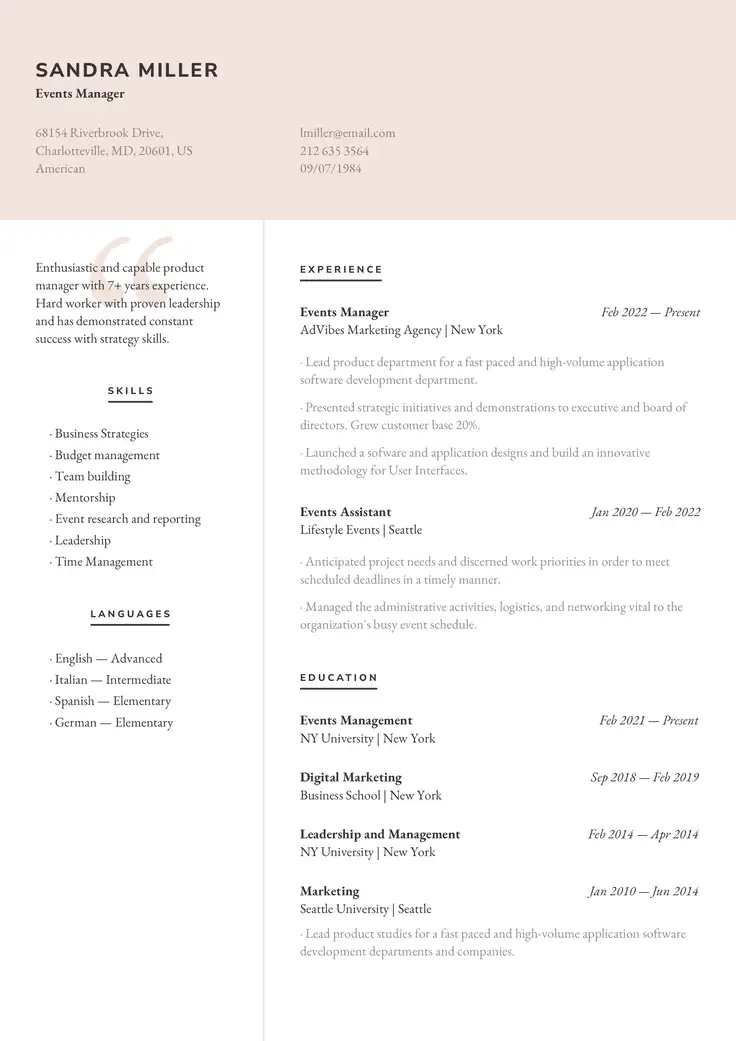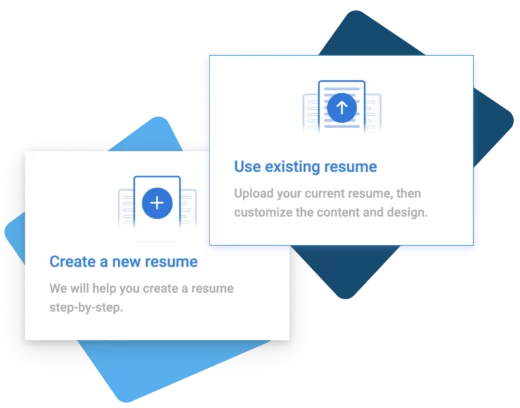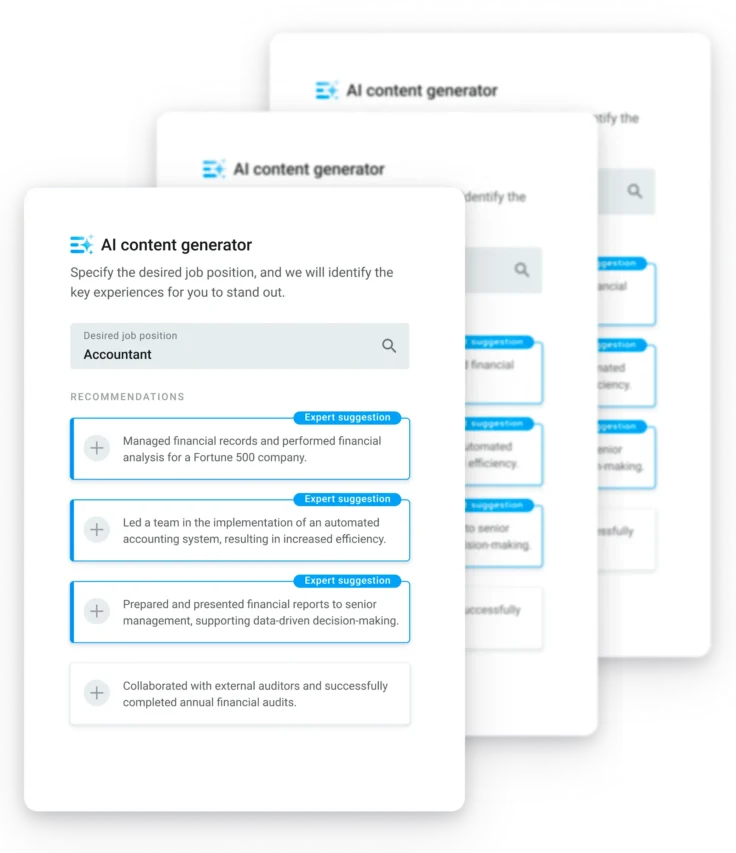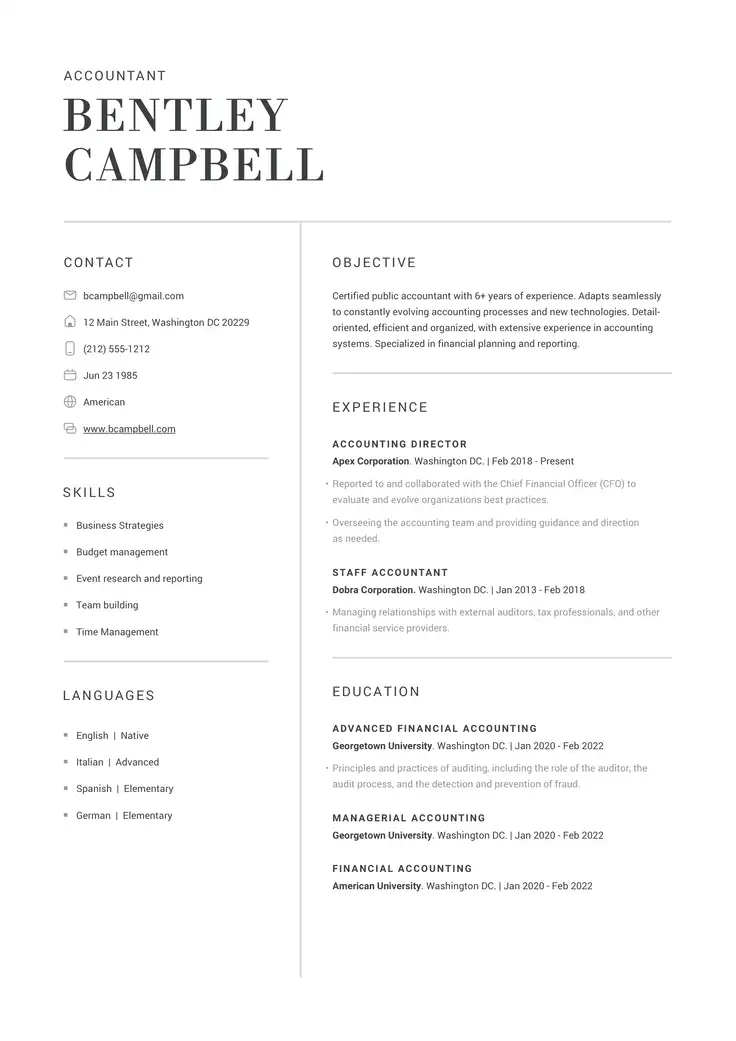Listing Work Experience on a Resume
How to demonstrate your career trajectory

The experience section is the core of any resume and the most important metric for explaining your career path to employers.
Listing work experience on a resume can be a tricky task. You may have never worked in your life or have had so many past jobs that you don’t have enough space on a page.
So, which parts of your professional experience should you include? Which parts should you exclude?
This guide offers tips on exactly what experience to put on a resume and how to write a work experience section that will attract a potential employer’s attention.
How To Structure Your Professional Experience Section
In a reverse-chronological resume format, each job should have its own distinct ‘entry’ within the Professional Experience section.
This approach ensures that your career path is presented clearly and efficiently, presenting your skills, the companies you’ve worked for, the industries you’re familiar with, and the contributions you’ve made.
Not sure what title to give it? Here are some ideas:
- Work Experience
- Professional Experience
- Relevant Experience
- Work History
Choose a title that best fits your experience. For example, students may include internships or part-time positions, which qualify as “work” experience but which might not be related to their target roles.
What To Include In A Resume Experience Section
Before crafting your resume’s experience section, it’s beneficial to brainstorm and jot down details about each position on paper.
Consider what you achieved in each role, the tools and technologies you used, and the colleagues or teams you collaborated with on successful projects. This process will help you clearly articulate your contributions and skills.
Begin by gathering all your work histories. For many job seekers, this includes paid or contracted professional positions.
However, for students or recent graduates, relevant experience might also encompass:
- Micro internships
- Volunteer work
- Study abroad programs
- Leadership of clubs or community teams
Creating engaging job entries to highlight your achievements
Next, it is time to detail your experience.
Start with your most recent position and work backward (this is called the reverse chronological resume format).
Each entry should include the following elements:
- Job title
- Employer/company name
- Location (City, State, or “remote”)
- Dates of employment
- Details of your accomplishments or achievements and contributions
Some of these details are unnecessary in functional resume layouts. For example, in cases where you may have large gaps in your job history, a functional resume layout can help downplay the scattered timeline of your employment and highlight the skills you’ve learned and will bring to the next position.
Most importantly, each job post should include a bullet-point list of your achievements. Each position listed should prioritize the impact you made in that role. Do not simply list the “responsibilities” or “daily tasks” of the job.
Include quantifiable examples of your success, as 34% of recruiters won’t consider applications that are not specific to the role, according to CareerBuilder.
Keep your experience section as focused as possible, listing only statements relevant to your target jobs. Forbes Magazine suggests limiting yourself to five bullet points per position.
Action verbs can significantly increase the impact your resume content has on the reader, enticing them enough to reach out for an interview. Include a variety of action verbs in each of your bullet points.
Examples of effective action verbs to use in your resume:
launched; implemented; spearheaded; coordinated; directed; increased; restructured; acquired; grew; saved; cut; identified.

Import Your Resume or Build a New One from Scratch
Give your resume a facelift for free! Import it to our resume builder, choose a template, and freshen it up in minutes.
How To Format The Experience Section On a Resume
You may do everything in your power to write a work experience section that wows, but if it is not formatted correctly, your resume could end up in the “no” pile. Consistency throughout your resume is key for allowing readers to digest your information quickly.
Here are a few tips to ensure this section is formatted properly.
- Format each work entry the same. List the details: job title, company name, location, dates of employment, and list of responsibilities.
- Use the same font throughout the resume and no more than two styles (i.e. one suitable font for job titles and another font for the contextual information.
- Align each section equally in a consistent manner (i.e. job titles and company name are left-aligned, and employment date ranges are right-aligned)
- Align each section header the same using one font and a consistent method for implementing bold, italics, and underline effects. This will ensure the highest level of readability.
If you have any questions about how to format work experience on a resume, you can refer to our handy online templates. These tools can save you lots of time on formatting.
Example of Work Experience Section
You may be wondering how one of your former positions, duties, and accomplishments should look on a resume. It’s critical to not only get the right format but not mention too much or too little info.
We’ve prepared some example entries to show exactly how your work experience should be formatted on your resume using the reverse chronological format.
Each entry should include up to five bullet points highlighting your achievements and contributions.
Pay close attention to how these statements focus on results and incorporate strong action verbs to convey your impact effectively.
Here are some work experience examples you can use to boost your own resume:
Experience
Senior Project Manager, XYZ Corp, San Francisco, CA
June 2023-Present
- Delivered 20+ high-value projects on time and within budget by leading a cross-functional team of 15+ members, each with budgets exceeding $1M.
- Improved team efficiency by 30% and cut project delivery timelines by 20% through the implementation of Agile project management methodologies.
- Reduced project costs by 15% and strengthened strategic partnerships by negotiating contracts with key vendors.
- Reduced project delays by 25% by introducing a risk management process that identified potential issues early.
Project Manager, ABC Inc, San Francisco, CA
July 2020-June 2023
- Consistently met key performance indicators by managing 10+ mid-scale projects with budgets up to $500K.
- Ensured seamless collaboration by coordinating with design, engineering, and marketing teams.
- Increased overall project visibility and improved on-time delivery by 10% through the implementation of a new project tracking system.
- Improved communication efficiency by conducting regular project status meetings and providing updates to stakeholders.
Junior Project Manager, DEF Co, San Francisco, CA
- August 2019-June 2020
Developed key skills in stakeholder communication, budget management, and team coordination by assisting in the management of 15+ projects. - Contributed to a 15% increase in team efficiency by creating detailed project schedules and plans.
- Improved record-keeping and accountability by developing and maintaining project documentation.
This example section has it all. It effectively uses action-oriented language and industry keywords to depict the individual’s responsibilities and achievements. The achievements are quantified to make them tangible and impressive.
Additionally, the roles exhibit a clear progression in skills, showing off the candidate’s career growth and capability to handle higher-level responsibilities.
Tips For Writing Your Previous Work Experience
We’ve amassed a list of easy-action tips for including your past positions on a resume to help you get started.
- Write in the present tense for your current work positions only and the past tense for all prior experiences.
- Adapt your work entries for each job, mentioning the most relevant and appropriate experience. If you are targeting different career sectors, this may include tailoring one or more versions of your resume.
- Explain gaps in your work history briefly. Most reviewers appreciate additional context explaining your gap in professional work. A quick sentence is all that is needed to detail full-time parenting, study leave, traveling, family complications, relocations, etc.
- Include internships and education/professional development courses in your resume, either in your work history or education section.
- Include voluntary or part-time work where appropriate, especially when you have little on-the-job experience or are changing careers.
These tips on how to complete a work experience section on a resume should help you get started.
You can also use our AI-powered suggestions in ResumeCoach’s resume builder and come up with more ideas to show off your past jobs and achievements in different ways.
How far back should experience go on a resume?
If you had a job that seems like it was ages ago, you may be wondering if it’s worth adding to your resume. While there is no strict rule, career coaches generally recommend focusing on the most recent 10–15 years of your work history.
If you have any doubts about omitting jobs from your resume, keep the following in mind:
- Relevance: Prioritize recent experiences that are most relevant to the job you’re applying for. Focus on showcasing your current skills and qualifications.
- Career Progression: Highlight positions that demonstrate career growth, increased responsibilities, or promotions.
- Industry Norms: Research industry standards to gauge how far back professionals in your field typically go with their experience. Tailor your resume accordingly.
- Early Career Highlights: If you have exceptional early experiences highly relevant to the position, include them, even if they fall outside the recommended timeframe.
- Resume Length: Keep your resume concise and focused. Including an extensive work history can result in a longer resume that may remove the impact of recent experiences.
What Do You Put on a Resume With No Experience?
Are you a recent college grad looking for your first job? Or are you changing your profession? In either case, building a resume with limited professional experience can be challenging.
Don’t write off what you have learned through other life experiences, though. You can create a compelling resume by leveraging relevant experiences, high grades in related coursework, and transferable skills.
If you’re an entry-level candidate, you should remember to add:
- Internships
- Relevant coursework in your education section
- Transferable skills
- Extracurricular activities
- Volunteer work
- Work shadowing
- Part-time jobs
Internships and part-time jobs look great if you can relate them to the job you are applying to, so don’t be afraid to include them on your resume.
Entry-level experience section resume example
Let’s begin by taking a look at an entry-level work experience sample.
Review these work experience samples to see how achievements and responsibilities can be effectively highlighted.
Internship Experience
Marketing Intern, ABC Marketing Solutions, New York, NY
June 2023 – August 2023
- Increased social media engagement by 25% by creating and scheduling content across multiple platforms.
- Developed a new email marketing campaign that boosted open rates by 15% and click-through rates by 10%.
- Conducted market research to identify emerging trends, providing insights that informed strategic planning.
- Collaborated with the design team to produce promotional materials, enhancing brand visibility.
- Assisted in organizing a successful promotional event that attracted over 200 attendees.
This format emphasizes achievements first, using quantifiable metrics and action verbs to highlight the intern’s contributions and skills.
Here’s what you should not do:
- Add irrelevant experiences
- Include generic statements
- Forget to mention relevant positions or courses
By adding the most relevant information and your transferable skills, you can give yourself a good chance of landing an interview and a job without any experience.
FAQs
To describe your work experience on a resume, start with your most recent job and work backward. For each position, include your job title, company name, location, and dates of employment.
Use bullet points to highlight key achievements and contributions, prioritizing results over responsibilities. Begin each bullet with strong action verbs and quantify accomplishments when possible. Focus on skills and experiences relevant to the job you’re applying for to convey your impact effectively.
On a resume, you can include a variety of experiences as work experience, especially if you’re a student or recent graduate. List traditional paid positions and internships, as well as volunteer work, leadership roles in clubs, and relevant projects.
For each entry, highlight your role, the organization, location, and dates. Use bullet points to emphasize achievements and skills gained, focusing on those that align with the job you’re applying for. This approach showcases your capabilities and potential to employers.
To write a work experience summary on a resume, start by listing your most recent job first, followed by previous positions in reverse chronological order. For each role, include your job title, company name, location, and employment dates.
Use bullet points to succinctly describe your key achievements and contributions, starting each with a strong action verb. Focus on quantifiable results and skills relevant to the job you’re applying for. Tailor your summary to highlight experiences that demonstrate your ability to succeed in the desired role.


